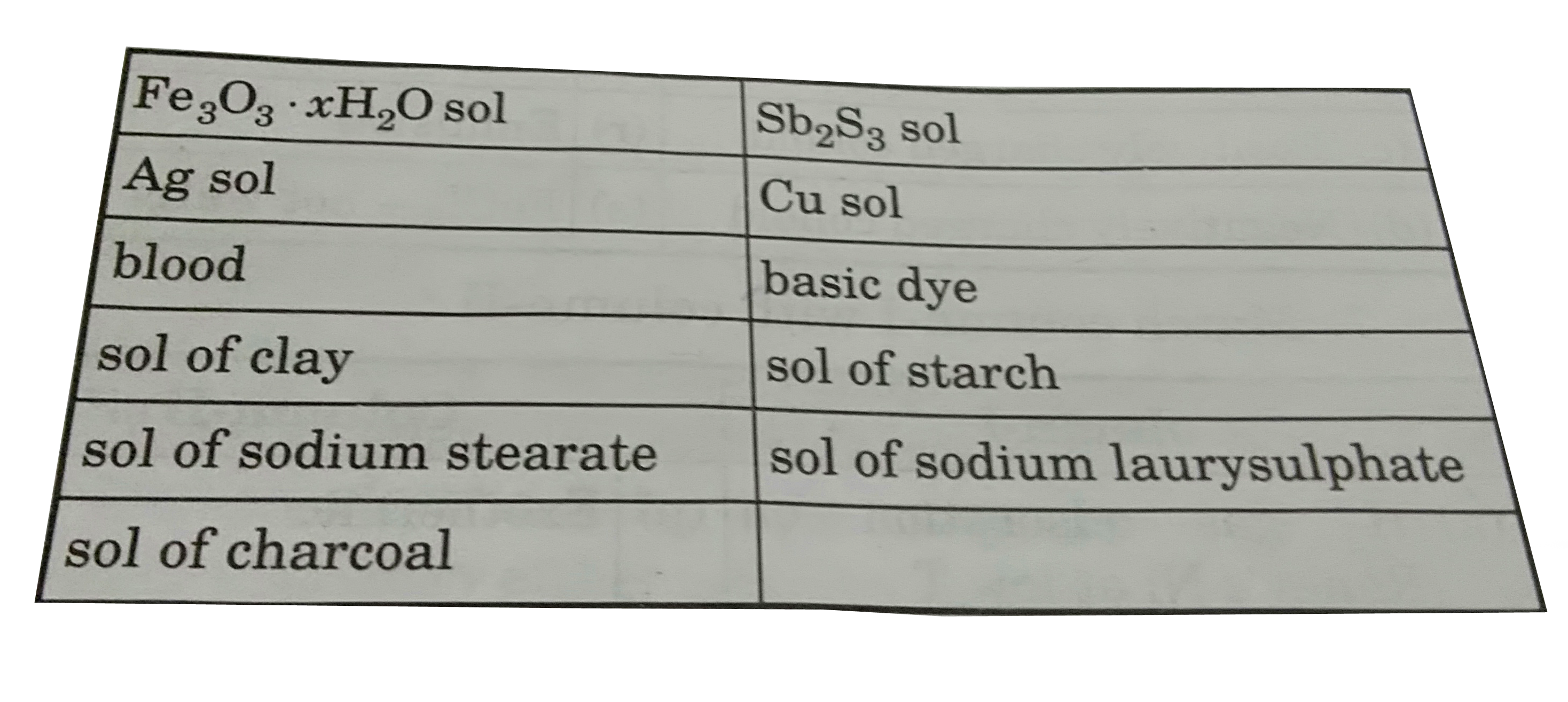Complete Solutions to SUBJECTIVE TYPE of chapter SURFACE CHEMISTRY of Class 12 book with complete answers and questions
| Class 12 | CHEMISTRY |
| Chapter | SURFACE CHEMISTRY |
| GRB PUBLICATION | SUBJECTIVE TYPE |
| Number Of Questions | 13 |
| Academic Year | 2023-24 |
In a particular case of physisorption, magnitude of enthalpy change and entropy change were observed to be 28 kJ/mole and 100 J/mole-K. Calculate the minimum temperature (in `.^(@)C`) above which physisorption will become non spontaneous.
View SolutionMolecular formula of starch can be represented as `(C_(6)H_(10)O_(5))_(n)`. If the gold number of one such starch molecule is 6.48 and 0.01 millimoles of the above starch are required to be added to 10 ml of gold sol to prevent coagulation by 1 ml of 10% sodium chloride solution, then calculate the value of n.
View SolutionOn addition of `1 mL` solution of `10% NaCl` to `10 mL` gold sol in the presence of `0.0250 g` of starch, the coagulation is just prevented. What is the gold number of starch?
View SolutionCalculate the number of sols which are negatively charged.

View SolutionCalculate coagulation value of `AlCl_(3)` if for coagulation of 400 ml of a gold sol, 427.2 milli-grams of `AlCl_(3)` is required.
View SolutionAt a temperature of 180 K, `O_(2)` gas adsorbs on Pt surface following Freundlich adsorption isotherm. Following experimental data is obtained.

where P is partial pressure of gas and x/m is mass of gas adsorbed per gm of platinum. Calculate millimoles of `O_(2)` adsorbed per gm of platinum at 4 bar pressure and 180 K.
View SolutionFor the coagulation of `100 mL` of arsenious sulphite `sol,5 mL` of `1 M NaCl` is required. What is the flocculaton value of `NaCl`?
View SolutionIn order to cause coagulation of 200 ml of gold sol, 585 ml 1% w/w NaCl solution having density 1.2 gm/ml was required. What will be the coagulation value of NaCl?
(Express answer in milli-moles/litre)
View Solution`6.84 gmAl_(2)(SO_(4))_(3)` is needed to coagulate 2.5 L of `As_(2)S_(3)` sol completely in 2.0 hrs. The coagulation value of `Al_(2)(SO_(4))_(3)` is :
View SolutionA container contains 1 litre, 2 M solution of cyclobutane in either. A piece of 3 kg charcoal is dipped in the solution. Molecules of cyclobutane get adsorbed on the surface of charcoal and form monolyer cyclobutane. The molarity of resulting solution decreases to 1 M. If surface area availble for adsorption on charcoal `2 cm^(2)//gm`. Then find distance (in pm) between two adjacent carbon atoms in a cyclobutane molecule.
(Assume: Shape of cyclobutane molecules as a perfect square.) [Use : `N_(A) = 6xx10^(23)`]
View SolutionIn a vessel `O_(2)` gas molecules were adsorbed on solid surface causing its partial pressure to decrease from 1 atm to 0.5 atm.
Given : `N_(A) = 6 xx 10^(23)`, Volume of vessel = 2.24 L Temperature = 273 K, Total area of solid surface `= 10^(2) cm^(2)`
Number of active sites per unit area `=10^(24) m^(-2)` Find number of `O_(2)` molecules adsorbed per active site.
View SolutionCount the number of correct statements.
(a) Minimum potential required for electrophoresis is called zeta potential
(b) Tyndall effect increases with increase in difference in size of particle and wavelength of light used.
(c ) Minimum amount of electrolyte in millimoles per 100 ml required to cause precipitate in two hours is called coagulating value.
(d) Zeolites are shape-selective catalyst.
View SolutionHow many of the following may cause coagulation in colloidal solutions?
(a) Tanning
(b) Dialysis
(c ) Cataphoresis
(d) Mixing of a lyophilic sol with a lyophobic sol
(e) Mixing of two lyophobic sols
(f) Mixing sol-I (`AgNO_(3)` with excess KI) and sol-II (KI with excess `AgNO_(3)`)
(g) Addition of alcohol to a hydrophilic sol followed by addition of small quantity of electrolyte
(h) Centrifuging
(i) Freezing
View Solution
SUBJECTIVE TYPE questions and complete solutions for chapter SURFACE CHEMISTRY of GRB CHEMISTRY (HINGLISH) of Class 12